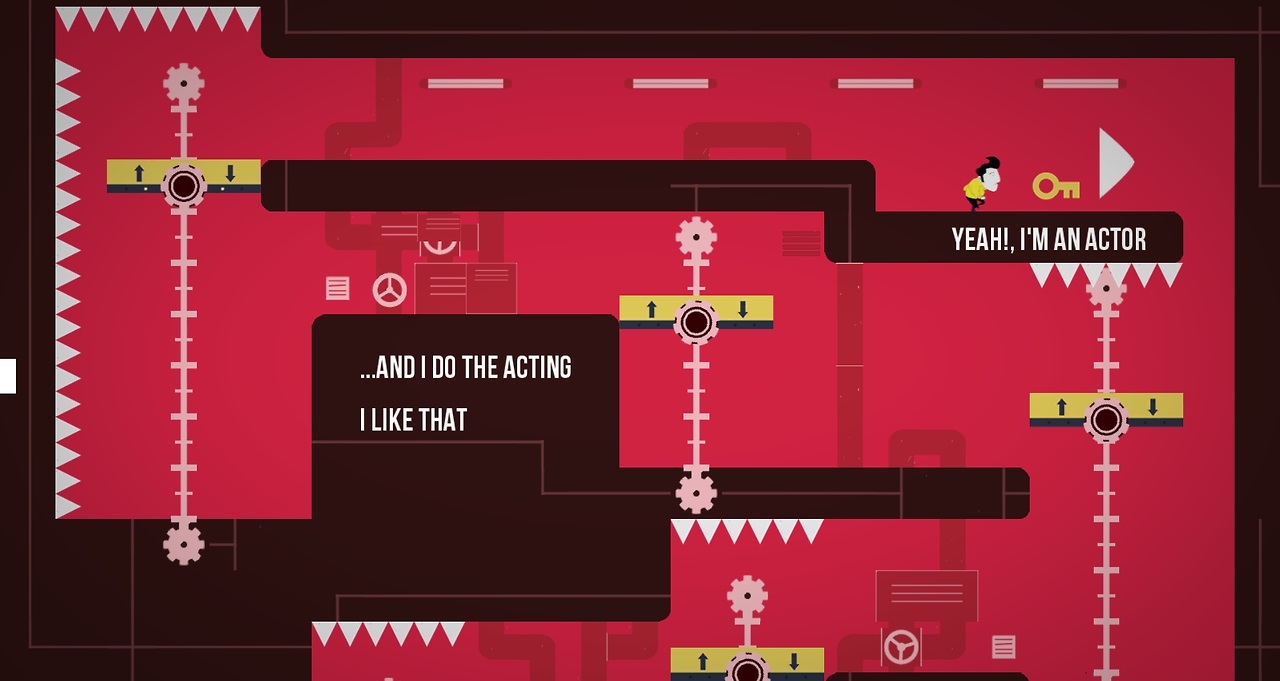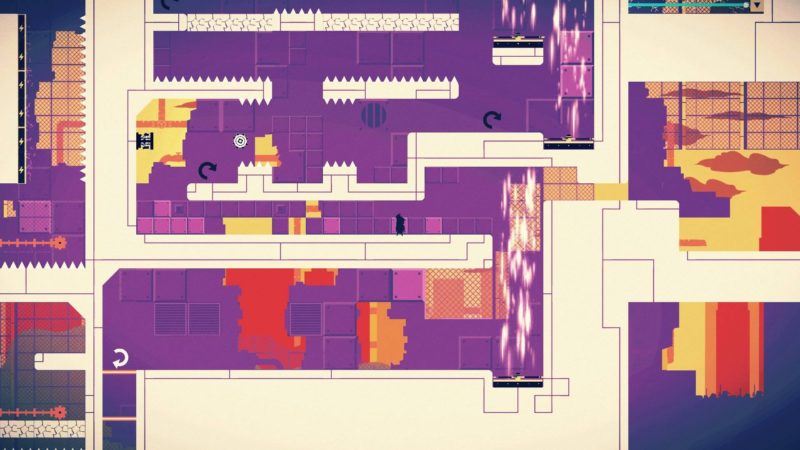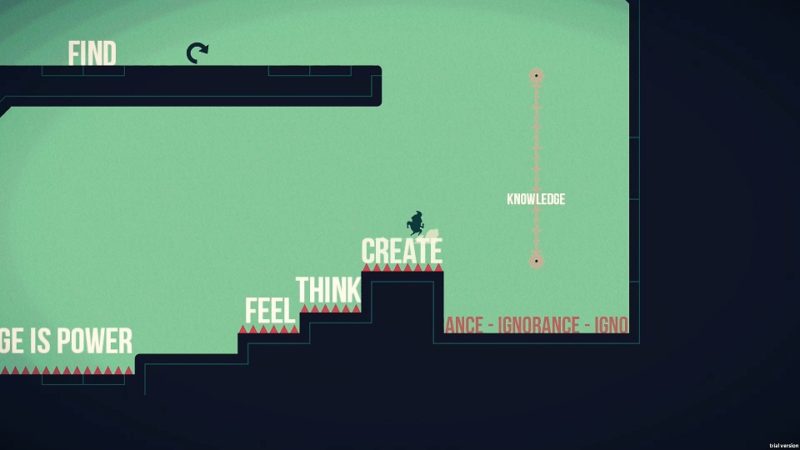In recent memory, there is a surge of 2D side-scrolling games that build off the essence of old-school side-scrollers. Super Meat Boy and Shovel Knight are primary examples of great platformers. Klaus doesn’t fall short of the list of great modern platformers. It’s very entertaining with an array of fresh ideas throughout its gameplay and is a self-aware existential title. La Cosa Entertainment presents simple graphics and design but it’s still none the less unique. Klaus kept me engaged from start to completion.
Storyline
The game starts with a fellow who wakes up in the basement of a corporation. The only clue is a tattoo on his arm conveniently stating “Klaus.” The only option for the man is to ascend up the building and find answers. As the gameplay progresses, the bits and pieces of the story reveal who this character is. The character is a clone of a giant corporation, and working is the only purpose for Klaus.
The story is a commentary on the unsatisfying New-Age work ethic. Slowly realizing the truth, Klaus begins to think for himself and even cleverly denying the control over the player. A second character, K1 is a brute almost dumb character that serves as a vessel to show how the corporation affects those who give into the system. It can be quite easy to miss the story because its dialogue is presented throughout the world. Instead of forcing to read dialogue you can just continue jumping and solving stages.

Gameplay
Like any other platformer, you run and jump to progress a level. However, Klaus keeps the formula fresh with each world. Once familiar with a particular type of obstacle the level will add a unique layer which makes the player think every time. The touch pad is an essential part of gameplay. It may make players worried, but it works just well enough. Players use the touch-pad to manipulate movable objects to get around a floor or solve a puzzle.
A second playable character called K1 is a big brute who is slower but much stronger and can even glide with a cape on his back. K1 provides a new dynamic of gameplay and new ways to go about the courses. At times both characters are essential to solve obstacles, for example, K1 can throw Klaus to a far platform. Despite this, Klaus’ best levels hide in each of the floors of the game. When playing, controls can either be reversed or play as two players at once. These levels are so unpredictable that almost any idea is possible.

Graphics
The style is that of a straight forward concept. The characters and environment look cell-shaded this, in turn, makes for the vibrant colors. Each floor of the game has a distinct color and theme that is consistent. Characters move fluently and are a huge contrast to the colors of the background. The environment always looks fresh because of it’s always shifting to make it more challenging for the player. All in all the game looks perfect for what it is trying to showcase.

Replayability
There is a fair amount to come back to in Klaus. Secret levels hide throughout every level of the game when the secret levels are beaten they earn the player a piece of a door that reveals another trippy level which in turn gives more back story to the character. It’s worth going back because these hidden levels are the unique and give a better understanding of the game. Once Klaus is complete there is an endless arcade mode for those who wish to test their skills.

Verdict
Klaus was an excellent game that always kept me engaged. The floors always kept thing fresh by always adding an extra layer of puzzle solving and obstacle hopping. Both characters in the game played excellently and when used together provides a new mechanics to tinker with. The secret levels of the game are the best ones, and you always want to experience them because you never know what twist is behind them. Klaus is worth a try for anyone that thoroughly enjoys modern platformers.





